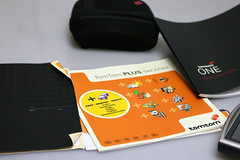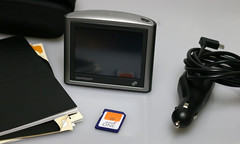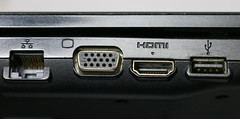Archive
606. UK Film by the film council
575. dvd cover dimensions
541. More Tim Burton – Auteur study definition
518. Parts of a PRESS KIT
WHAT’S INSIDE A PRESS KIT?
As far as its contents, no two press kits are alike. However, most press kits will contain a few \”staple\” items.
These may include:
AD SHEETS/SLICKS An ad sheet (also called an ad slick) is a page or pages of camera-ready ads of varying sizes that are used in print media such as newspapers and magazines. They are prepared by the movie studios and sent to theatres and/or promotional companies.
PRESS STILLS – Press stills are standard 8\” x 10\” glossy photographs, normally black & white. They can be the film\’s stars and/or crew either from scenes in the movie or on the movie set during the production of the film. There is usually some type of descriptive information included on the press still that explains who is in the photo and what the photo represents. Sometimes the studios will type the description on a separate sheet of paper and staple it to the back side of the still. The press still also have a studio still number which is normally printed into the still itself which identifies the still. Quite often they will include the NSS number (reference number showing year and number of film) and studio information on the bottom right… but not always. Every presskit is different with a varying number of press stills from 1 (especially in the mini press kit) to over 30.
PRESSBOOKS The term pressbook is used generically, but has come to mean the flyer, pamphlet, booklet or book (released as part of a press kit which contains certain information about a particular film. Pressbooks and related press materials date back to 1910\’s. Movie studios release certain information about a film, its stars, crew, etc. that the theatres and/or film exhibitors can disseminate to the press. Recognizing that many theatre managers do not have an advertising background, the major studios design and distribute advertising and press materials to the theatres to help in the overall promotion of a film. The pressbook contains whatever information a studio chooses to release on a particular film. Most include background information about the film, the actors, the crew and other tidbits about the film\’s history. Some contain news articles about the stars\’ lives outside of the film. Some press books contain a breakdown of the advertising materials and merchandising tie-in products that are available to the theatres. Press books can contain ideas for promotions, radio and TV advertising, newspaper and magazine advertising, contests and games.
Posters: ONE-SHEET and Mini Sheet – The most widely used movie art is the one sheet. Up until approximately 1984, the one sheet measured 27\” x 41\” (normally with a border). Since the mid 1980’s, some one-sheets measure 27\” x 40\” (normally without a border). They are normally printed on paper and displayed in a marquee case.
Mini sheets are often the same image but smaller (see below). Since it is the centre of the advertising movie paper, some studios offer many versions of the one sheet for a particular movie. These include
ADVANCE/TEASER In order to create an early \”buzz\” around a new film, many movie studios will issue what is known as an \”advance\” or \”teaser\” movie poster. These advertising materials are distributed to theatres and film distributors well in advance of the film\’s projected release. When discussing advances with older collectors, you need to remember that there is a difference between an Advance and a Teaser. Even though both are used to promote the film before the release, a Teaser has no credit information at all, so teasers are advances BUT not all advances are teasers.
Depending on the film’s promotional plan, the advance sheet may be identical or may differ significantly from the regular issue one-sheet (the one issued with the release of the film). In some cases, the studio may choose to put out a series of advance sheets – each giving a little more information about a film. In some cases, the artwork may be completely different and not include the normal credit information. In other cases, the artwork is identical to the regular issue except that it will contain the projected release date. While there is no set standard for an advance one-sheet, it will normally have one of these distinctions:
The word \”Advance\” or \”Teaser\” in the lower bottom corner. The abbreviation \”Adv\” in the lower bottom corner. Words like \”Coming Soon\” or \”In Theatres This Summer\” somewhere on the poster, usually on the bottom.The projected date of release. No or limited credit information. On films with smaller budgets, only one poster is issued which is used as both the advance and the regular. Awards poster Lenticular is like a hologram the poster needs to be moved to make it change
PREMIERE: Movie studios will sometimes present a special premiere screening of a film at a specific theatre or at limited theatres. In these cases, studios will sometimes release a special movie one sheet promoting the premiere. Many times, the movie poster will contain similar artwork to the regular poster, but also include the marquee or some other indicator of the place where the premiere is held. When Star Wars premiered, it was shown at four specific theatres, and only two posters for each theatre were made. These are extremely rare and very expensive. As its name implies, the \”mini-sheet\” is simply a small poster, printed on poster paper. They come in a variety of sizes, depending on the studio and the film. In many cases, the mini sheet is an exact duplicate of the one-sheet, only smaller. The size of mini sheets can range from that of a half sheet down to almost that of a herald, depending on the purposes outlined by the studio. Quite often, mini sheets are printed as advances to help generate interest in the film. Buttons to be distributed to movie patrons or at outside marketing events.
Premiums- Hats, T-shirts, stickers, cards, etc. – used as giveaways or special promotions. Special screening passes to be a
459. Film Noir Links
http://rogerebert.suntimes.com/apps/pbcs.dll/article?AID=/19950130/COMMENTARY/11010314/1023
http://www.filmnoirstudies.com/timeline/index.asp









